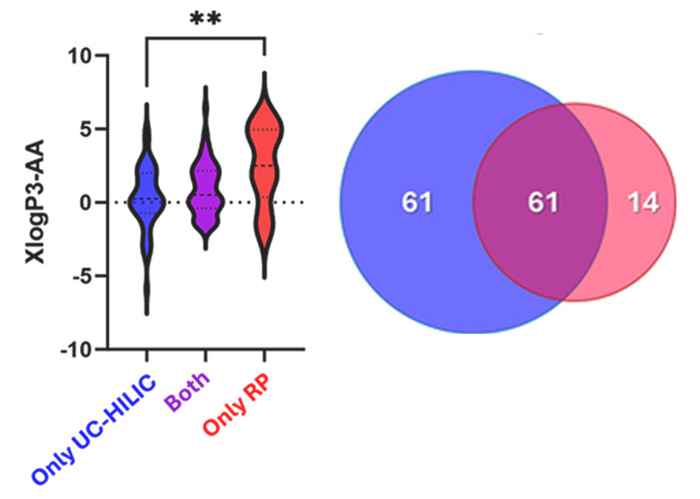New approach for chemical analysis enhances the detection of polar compounds in water
30 January 2025

Persistent and mobile organic compounds (PMOC) are of great concern for water quality and human health. Thanks to sophisticated analytical techniques, more and more PMOCs can be detected and quantified in water.
The workflow generally consists of separation with (reversed phase) liquid chromatography (LC) followed by analysis using high-resolution mass spectrometry (HRMS). However, since (RP)LC separation has limits in retaining and detecting polar PMOC varieties, novel dedicated analytical procedures are required.
Supercritical fluid chromatography
The paper in Analytica Chemica Acta describes such a procedure and its application, for the first time, in environmental analysis. The research was performed by Andrea Cerrato (postdoctoral visiting researcher from la Sapienza), Thomas Holmark (PhD student) and Andrea Gargano (associate prof. at HIMS), in collaboration with researchers Elvio Amato and Erik Emke at KWR Water Research Institute in Nieuwegein.
In their paper, the researchers describe the use of a novel characterization method based on supercritical fluid chromatography (UC-SFC) for analyzing polar as well as apolar organic molecules that may be present in water. The researchers combined this with another separation using hydrophilic interaction liquid chromatography (HILIC) before analysis with high resolution mass spectrometry (HRMS).
Detection of substances of very high concern
The paper describes the first application of this combined UC-HILIC-HRMS workflow for non-targeted PMOC analysis in water and compares the results with the commonly used method of reversed-phase liquid chromatography (RP-LC). It reports a significant increase in the number of polar PMOCs found: 121 with the novel method against 75 with RP-LC. Among the compounds exclusively identified by UC-HILIC-HRMS are various prescription drugs, food additives, and industrial chemicals. The novel method identified four chemicals that are on the ‘Candidate List of substances of very high concern for Authorisation’ by the European Chemicals Agency (ECHA), and five included in the ‘Surfacewater WatchOut’ List of the EU. According to the authors, their proposed approach represents a robust alternative to traditional methods for broadening the chemical space of separation and mass spectrometric detection.
Paper details
A. Cerrato, T. Holmark, E. Emke, E.D. Amato, A.F.G. Gargano: Expanding the chemical coverage of polar compounds in water analysis by coupling supercritical fluid with hydrophilic interaction chromatography high-resolution mass spectrometry. Analytica Chimica Acta, Volume 1341, 2025, 343672. DOI: 10.1016/j.aca.2025.343672.
See also
- Chemometrics & Advanced Separations Team (Research group Andrea Gargano, Bob Pirok and Tijmen Bos)
- Chemical Water Quality expertise at KWR